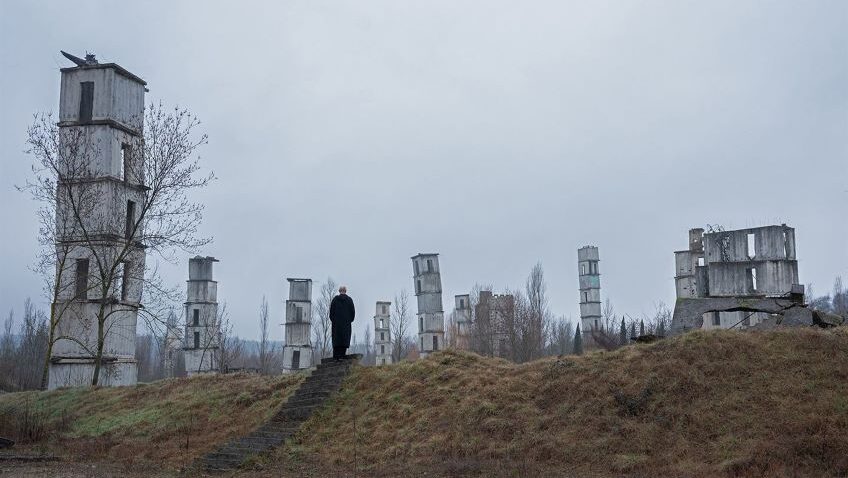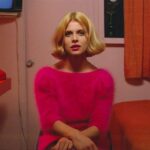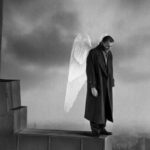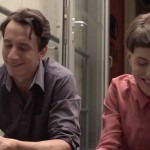Joyce Glasser reviews Anselm (December 8, 2023) Cert. PG, 93 mins.
At the Cannes Film Festival, the film director and polymath Wim Wenders told an interviewer that making the biographical documentary Anselm was the way for him to learn more about the painter. You can see why he wanted to. Wenders and Anselm Kiefer were born into Catholic families in Germany within a few months of one another in 1945, part of the generation that did not learn the truth about World War II until they were teenagers. Both attended the University of Freiberg, where Kiefer studied law before switching to art and Wenders studied medicine before moving to Paris to become a painter. Growing up in the ruins of Donaueschingen, in southwest Germany at the source of the Danube in the Black Forest, Kiefer looked to France where he has resided since 1992. In the film, Anselm in his thirties/forties is portrayed by his son, Daniel. It is Wender’s great nephew Anton who plays young Anselm, the child who is father to the man.
Both artists are seekers; a theme of Wenders’ film, Paris, Texas and an affinity that is revealed in Wenders’ previous 3D biodoc, Pina, about the late German choreographer Pina Bausch. “What are we yearning for” is the question her work asks, while Bausch’s brief instruction to an uncertain dancer is simply to ‘go on searching’. As a child, Kiefer’s mother played Wagner’s Lohengrin, and he imbibed the opera’s sense of yearning and searching, conscious that he would never arrive.
As a baby Kiefer was wheeled into the forest to escape the bombing. His studios have always been near or in forests and trees and forests (symbols of National Socialism) appear in a significant portion of his works. His obsession with trees is shared by his older colleague Georg Baselitz and his mentor, Joseph Beuys. In the film there is an odd scene where (Daniel) Kiefer drives off 300 miles to Düsseldorf to show someone he has spoken to on the phone his recent work. That person was Beuys, who died in 1982: the only person whose opinion Kiefer sought.
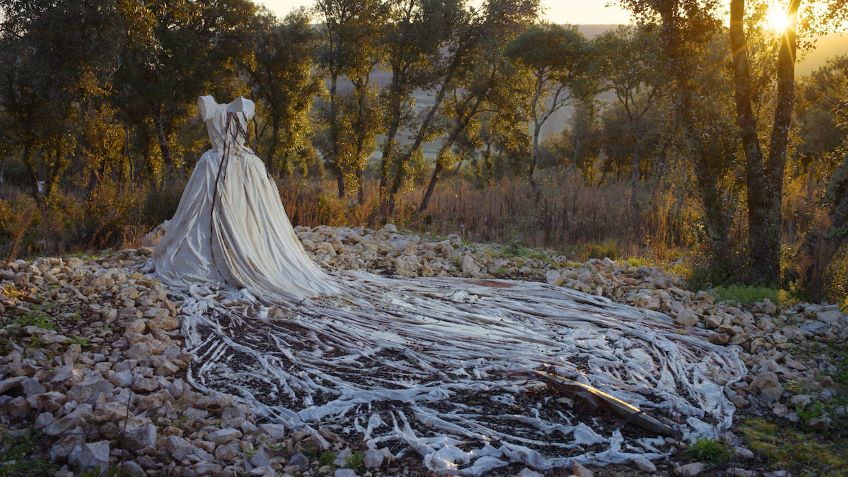
We see how Kiefer’s paintings share the Wagnerian and Norse mythological heroes seized by the Nazis, as if to purge them of this abusive appropriation. Kiefer’s painting Nothung, shows the sword that Sigurd uses to kill the dragon Fafnir stuck into the wooden floor of Kiefer’s 1971 studio, a wooden attic space in Hornbach, in the Oden Forest. In Wagner’s Ring Cycle, Siegmund alone is strong enough to extract Wotan’s sword from a tree only to be undone by the gods. A print signed by a C Ropold from 1933 shows a bare-chested Hitler as a blacksmith forging the pieces of the godly Nothung just as Sigurd had done. In the early 70’s Nothung appears on canvas several times, as if waiting for a new hero.
If Kiefer’s use of Norse mythology in the 1970s and ‘80s was controversial, the furore was nothing compared to his 1969 series, Occupations, which confronted Germany’s still raw history unambiguously. Dressed in his father’s old army uniform, Kiefer travels to various historical sites in three countries giving the banned Nazi salute. He views these photos and paintings as performance art, using his body, not as a self-portrait but as a mirror which he holds up to society, much as Philip Guston did in the 1930s (and again around 1970) to confront racism with his KKK paintings.
The film opens on a striking circle of statues of women from antiquity identifiable as such only by their white gowns, each with a strange sculpture on their heads. There are no captions and no commentary. We are immersed in a surreal landscape where the statues, on a bed of moss, are exposed to the elements. This is part of Kiefer’s current, and perhaps final studio in Croissy, outside of Paris where he took over a former warehouse from the department store, La Samaritaine. A wider shot reveals more of these spectral objects, one with tree branches, one with bricks, and one with a crystal-like object in place of their heads. Someone well versed in Greek history might identify the one with a lead book on her shoulders as Myrtis of Anthedon, a woman poet criticised for competing with the male poet Pindar.
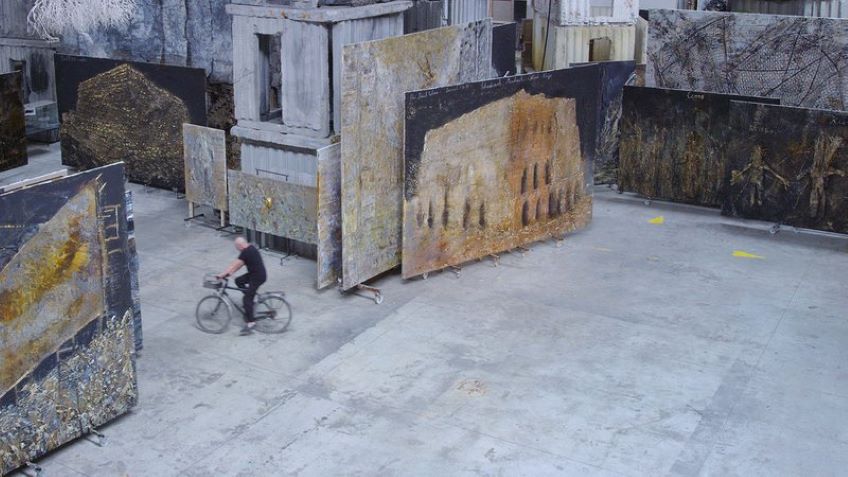
Kiefer is a master of connections, some so complex (as demonstrated at his exhibition on String Theory at the White Cube Gallery) as to be unfathomable. He fuses poetry (his well-spring), art, literature, history, myth, the spiritual and the sacred, life, death, and the cosmos as well as a vast array of materials into his paintings and sculptures that are, like the cosmos, huge, scorched and ever changing. This organic attribute even extends to Kiefer’s 200 acre industrial-artistic complex in a former silk factory outside of Barjac, France, referenced in the film through Sophie Fiennes 2010 documentary, Over Your Cities Grass Will Grow.
Some of these complex connections are biographical and, occasionally, Wenders enlightens us. The references to Van Gogh in Kiefer’s art are unmistakable, particularly the almost omnipotent sunflowers (he even grinds the seeds in his paint) and the black crows in his Morgenthau series – a visual comment on the post war Morgenthau plan that would have altered the course of German history. But who knew that Kiefer, a child prodigy, was the first German to win a prestigious competition that paid for him to trace Van Gogh’s footsteps submitting drawings from each location. In another example, Kiefer shows us a book of artwork entitled Heidegger’s Brain, a series with far reaching links. Kiefer, who was at Freiburg when Heidegger was teaching there, laments that the world will never know what the great philosopher-turned-Nazi-collaborator said to the Romanian poet and Holocaust survivor (although he committed suicide, age 49), Paul Celan who confronted him. It becomes even deeper if you know that the writer Ingeborg Bachmann, whose poetry we hear in the film, was Celan’s and Heidegger’s lover for a brief time.
Celan’s poetry is so fundamental to Kiefer’s work that it figures in several scenes in the film. It is worth the price of admission to hear Celan reciting his famous poem, Death Fuge. Kiefer imagines how hard it must have been for Celan to write poetry in German, a language he associated with the death camps that murdered his parents.
Generally, Wenders avoids explanation or interpretation, or even identifying the works we see. He lets the works and the process flow by us. Kiefer is part artist, part alchemist. Museum restorers bemoan the fading of pigments, whereas Kiefer counts on it. We see the lean, fit 78-year-old cycle around his vast studio, inspecting the stages of “works in progress” and commencing work on one. Muscular assistants wheel in huge vats of paint. No little tubes here, although the appearance of palettes in his paintings might symbolise the artist as intermediary between the imaginary and the external worlds. Sometimes the work is subjected to hot lead, then set on fire with a blow torch and hosed down with water. Rubble fills the cosmic spaces along with straw, metal, paper and other debris. Not exactly the scars of history or the ruins of German cities, but the creative alchemist’s equivalent.

